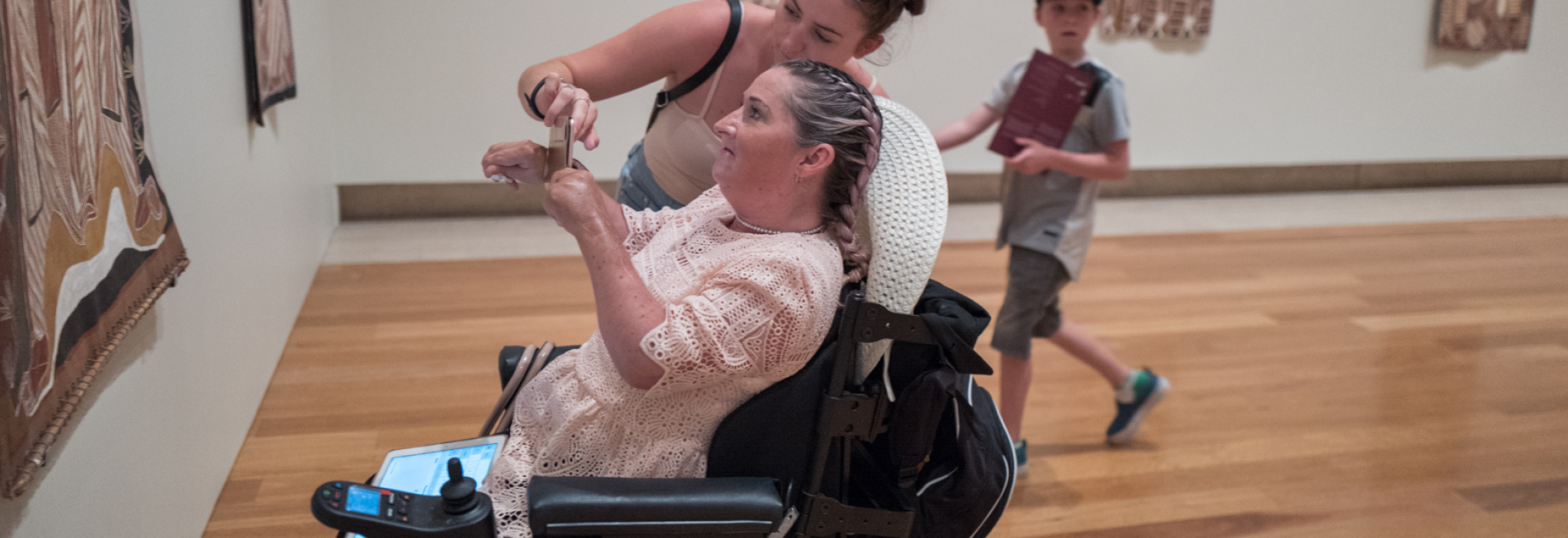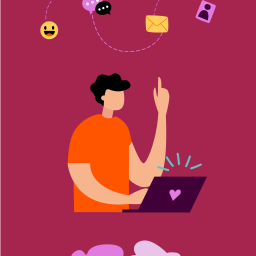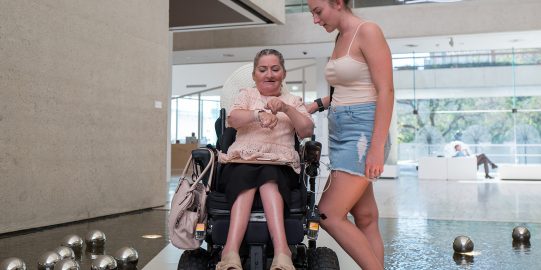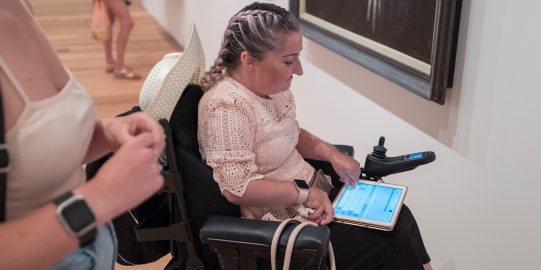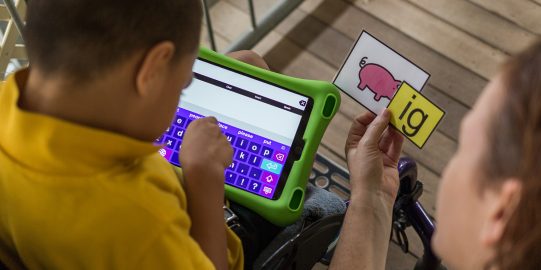More than 4.9 billion people around the world use social media. This number increases every day. The most common social media sites are Facebook, YouTube, Twitter, SnapChat and Instagram. We use these sites to communicate with our friends and acquaintances and connect with people who share our interests.
We often hear on the news about the dangers associated with social media, such as the risk of social isolation from choosing virtual connection over face-to-face interaction. We may not hear, however, about the potential importance of social media in the lives of people who use Augmentative and Alternative Communication (AAC) to communicate.
“I think social media assists communication partners and non-disabled peers to understand capacity. When people meet me in person, they often use two word sentences. Those who have interacted with me on social media will treat me as the educated, insightful person I am.” ~ Johanna Schmidt, AAC user
Research demonstrates that social media has an unusually positive effect on the lives of people who use AAC. Social media is associated with:
- increased interaction and communication with more people
- improved social closeness with friends, family and co-workers
- reduced isolation and loneliness
- increased independence
- building a self-identity and improved self-expression
- maintenance of personal interests and hobbies
- increased social roles, such as by becoming a blogger or mentor on a social media site
- improved physical health, through better self-management of the underlying disease or disorder, improved access to advice, and improved information sharing with physicians
In our interviews with AAC users, we heard even more compelling descriptions of the role of social media in their lives.
Social media is its own form of AAC
“Social media, texting and tweeting are basically large scale socially accepted AAC systems.” ~ Saoirse Tilton, AAC user
Several described their social media sites as a form of AAC itself, more universal and inclusive than speech. They argued that everyone who uses Facebook is using AAC, because it is a way of communicating as an alternative to speech. They described an inherent fairness when everyone uses visuals and text to communicate. This corrects the imbalance of typing or selecting symbols when your communication partner is using speech.
“Social media gives me more of a chance to interact, rather than just communicate. I often find with the rush of using AAC, I fail to truly interact and connect with others: asking questions, showing interest, offering support.” ~ Johanna Schmidt, AAC user
“Social media is super important… I'd need my friends to live closer (and therefore not to be as reliant on autistic and disabled community connections) on top of being able to rely on speech, for social media to be much less important.” ~ Alyssa Hilary, AAC user
Social Media to show their own authentic self
Social media is often criticized as a place where people go to invent a new version of themselves. But several AAC users said that their own authentic self is only revealed on Facebook. They talked about how, in live interaction, their visible differences (such as AAC use or involuntary movements or sounds) dominate how they are understood by others. In person, other people treat them differently. Most felt that in face-to-face conversation, they are underestimated and not given the opportunity to be heard. On social media, they can more accurately display their complete personality. They can have their full say.
“I make a lot of involuntary movements, and many people assume that I have little or no comprehension. In the real world, because I'm physically different, even those who know me well rarely engage in intelligent or stimulating conversation.” ~ Johanna Schmidt, AAC user
In live conversation, people with a range of disabilities may find it difficult to control physical movements, sounds, tics, or outbursts that are not considered socially appropriate. They may struggle to follow what one person called "normative social cues,” such as maintaining eye contact. On social media, all of this is invisible. Another AAC user said, “I feel normal on Facebook.” My message can be heard, in a more “socially appropriate way.”
Social media is more accessible
Social media is more accessible to people with a range of communication challenges because it relies less on text. It is inherently multimodal. We share photos, images, and videos instead of long paragraphs of text or monologues of speech, supporting anyone who struggles with comprehending speech. Visuals help keep our attention. “If, in person, a friend is telling a long story it might be harder to follow the huge amount of information at once,” reports endever* corbin. “On Twitter, information is coming in bite sized chunks, that helps my reading comprehension and ability to attend to a conversation.”
Social media is more efficient
Social media is more efficient for people for whom every movement may be laborious and needs to count. Instead of typing out what we did on our travels, we can share photos and just caption them with a few details. There are multiple efficient ways for others to respond, with “likes”, emojis, video GIFs, or by sharing or retweeting. Humour, irony, jokes, and references to popular culture are often much easier to share via social media than through an AAC device.
“Emojis are so valuable in online communication. I often don't have control of my facial expression, and using P4T alone can lead to misunderstanding of subtle communication such as conveying warmth and kindness, which many may express with a smile. Emojis are an important way I convey warmth and kindness, which others may express with a smile. “ ~ Johanna Schmidt, AAC user
Social media reduces barriers to communication
Many AAC users described access to the community as a barrier. Medical conditions might keep them home. Limited financial resources and inadequate funding for disability support services can make it hard to meet up with friends. Social media can help compensate for some of these barriers.
Further, communication on social media is less demanding than when face-to-face, so may be more fulfilling. It moves at a slower pace than speech. As one AAC user shared, "there is no implied timeline in terms of needing to respond right away."
